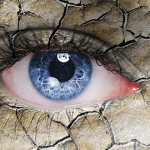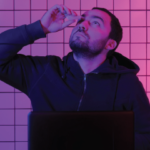It can be harder to diagnose Sjögren’s disease if a patient does not have strong symptoms of dryness and dryness only becomes apparent during testing. “Some of the patients who say they’re dry aren’t necessarily as dry as you might think and vice versa,” she said.
When it comes to antibody testing, Dr. McCoy will order an SS-A test (anti-Ro 52/60 antibody), both to check for a positive result and to find the patient’s actual SS-A level.
Although using other antibodies for a Sjögren’s diagnosis, such as an early antigen panel or carbonic anhydrase VI, has been discussed, not enough evidence supports their use for a Sjögren’s diagnosis, she noted.
If a patient is SS-A negative but still exhibiting symptoms of Sjögren’s disease, Dr. McCoy orders a labial salivary gland biopsy. However, she said it can be challenging to find an ENT provider or dentist who can perform this procedure.
Another challenge can be getting an accurate pathologic interpretation from the biopsy, as less tissue can lead to a higher likelihood of misdiagnosis.2 “You actually need to pay attention to how much tissue there is and then find a good pathologist,” she said. The pathologist will report a focus score, which involves looking for mononuclear cell infiltrates on the gland.
Other diagnostic tools for Sjögren’s are not as widely used, including the use of special stains or different cell markers.
Sjögren’s Treatment
Dr. McCoy characterizes patients with Sjögren’s disease as having both dryness but also fatigue, pain and brain fog that dramatically affect quality of life. For now, treatments are still mostly just supportive.
For dry mouth, sugar-free gum and candies, wetting agents and sialogogues are available. “The first patient described in the literature in the 1880s was treated with the same thing we’re using now or a derivative of it. That’s nuts,” Dr. McCoy said.
For dry eye, preservative-free wetting agents, as well as punctal plugs, moisture chamber eyewear and environmental modifications—such as staying out of windy areas—are typical. “It’s all largely supportive unless you have end-organ involvement. That’s where you reach for off-label immunomodulators,” she said.
If patients don’t respond well to the initial ocular treatments outlined above, they should be referred to ophthalmology. Topical drugs, such as cyclosporine ophthalmic emulsion (Restasis) or lifitegrast ophthalmic solution (Xiidra), may be prescribed with mixed response, Dr. McCoy said.
Although hydroxychloroquine had been used frequently in the past, the 2014 JOQUER trial did not show that it was effective at six months to treat symptoms of Sjogren’s disease, leading to providers moving away from it as general symptom treatment of Sjögren’s.3

